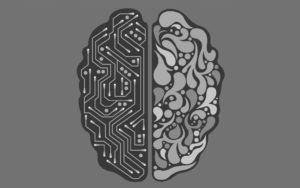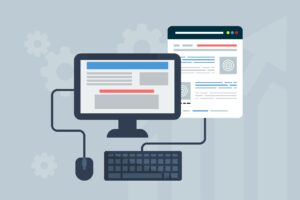The pharmaceutical field is embracing new technologies to enhance services, research, and data analysis. In this article, we’ll explore how pharmacists are utilizing these advancements and their potential to revolutionize the industry.
In this article, we will explore just a few of the ways in which pharmacists are utilizing new tech — and how these resources may change the face of the industry.
Accessibility
Robotics and automation are swiftly becoming key resources within the medical field, and one of the main benefits they provide is a greater level of accessibility for patients and service users.
The pharmaceutical sector is no different: through the application of various technologies of this kind, patients can find answers to their questions, self-test for some conditions and even order prescriptions 24/7.
Responsibly programmed automated chatbots can respond to queries and offer advice to individuals communicating with pharmacy services out of hours, speeding up processes, reducing the workload of medical professionals and providing patients with peace of mind.
From signposting relevant services to suggesting potential treatments, systems of this kind can make a huge difference. Certain straightforward procedures, such as hearing and allergy tests, can now be taken at home using available technologies.
Not only does this save time and resources for pharmacists, but it also means that individuals with reduced mobility or little access to transport or funds may easily access these services. Operatives within the pharmaceutical sector may even choose to offer 24-hour collection.
“A service system similar to the parcel lockers used by Amazon and other delivery companies allows patients to sign up, have their prescriptions fulfilled, and leave the required items in a secure, PIN-accessible lockbox for them to collect at their convenience.”
This allows improved access for those whose schedule does not allow for 9–5 prescription collection.
Medication and Health Monitoring
Pharmacists and pharmacy operatives across the world face a particular challenge in monitoring uptake and regulating patient compliance.
Naturally, the efficacy of most drugs and treatments depends on the user’s adherence to instructions on how — and when — to use them.
This can prove something of a pitfall, as many patients are very busy and may forget or put off taking medications, while others may be mistrustful of certain drugs. Some facing cognitive challenges may forget altogether or actively reject their treatment.
Today, new technologies and systems are in place to remind patients of the correct time to take their medications, and some of these technologies can even be programmed to collect feedback on the long-term impact of a specific drug.
By asking the user to input information on the severity of their symptoms at different stages throughout their treatment — while concurrently reminding them to take their medication on time and dispensing it with suitable regularity — these systems offer an almost comprehensive service.
The data collected can then be fed back to the prescribing pharmacist, helping them to track progress without the need for direct and accurate reporting from the patient.
Digiceuticals
“‘Digiceuticals’ refers to particular technologies usually mobile or tablet applications that offer therapeutic support for patients who need to monitor and manage their health on an ongoing basis.”
This may include individuals who are facing issues such as:
- Nicotine addiction or reliance on other substances.
- Anxiety, depression or other mental health challenges.
- Insomnia, eating disorders or neurodivergence.
- Conditions requiring ongoing physical therapy exercises.
- Diabetes and other chronic, life-limiting or debilitating conditions.
These digital tools can help users to manage practical tasks such as undertaking of regular physical therapy exercises or the checking of blood sugar levels or blood pressure. At the same time, they may also provide cognitive behavioural therapy (CBT) or behaviour modification support.
When used in conjunction with medications and other treatments — or, indeed, as stand-alone resources — these applications allow patients greater autonomy, flexibility and personalization when it comes to the management of their condition, as well as freeing up the working hours of medical professionals.
Risk Management
Many medications come with adverse side effects, and the recording and evaluation of these constitute an important aspect of data collection and analysis within the pharmaceutical sector.
Not only can AI and automation streamline the collection of information and its addition to national databases — enabling the probability of certain severe side effects to be more easily calculable — but there are also technologies that create a ‘drug profile’ for certain patients.
The profile considers the medications currently utilized by an individual, and whenever a new treatment is prescribed, it undergoes a cross-check with the existing regimen. If the combined treatments are known to have adverse effects, the system flags this, significantly reducing the risk of severe reactions and overprescription.
Another risk that can be more effectively managed through the application of advanced technology is that of antibiotic resistance. Without due care, certain bacteria may develop an immunity to antibiotic treatment — resulting in highly contagious strains that are tougher to treat and may potentially cause dangerous epidemics. To ensure the responsible use of antibiotic medications, it is crucial to prescribe them appropriately and ensure that patients complete the full course of treatment each time.
“New developments in pharmaceutical technology enable the intelligent collection and analysis of data, generating alerts that can be accessed by all parties involved in a patient’s treatment.”
These alerts indicate when the use of antibiotics would be suitable and when alternative approaches should be considered before resorting to antibiotics. The issue of antibiotic resistance has long been a subject of intense focus and study within the industry for many decades.
However, those now beginning their studies in order to pursue PharmD careers may well graduate into a world where technological advances allow far easier management of antibiotic prescription. Earning a Doctor of Pharmacy degree allows graduates to work alongside doctors, nurses and other medical professionals, recommending and managing medications. They may sometimes assess patient health and make recommendations.
Indeed, PharmD courses themselves have undergone something of a technological revolution, with many — such as the one offered by the University of Findlay – available on a remote, ‘distance-learning’ basis.
Conclusion
The development and implementation of new technologies within the sphere of pharmaceutical research and practice are vital to its growth and improvement. It will serve to boost the efficacy of treatments, processes, communication, access, affordability and many more aspects.
Of course, many new tools rely on the collection of data, which must be undertaken responsibly and with suitable consent — and conversations are ongoing regarding the proper monitoring and management of AI and machine-learning systems.
There is also the challenge of patient uptake. It will inevitably be more difficult to successfully encourage the use of new tech by patients who have a distrust of technology or limited computer literacy. However, if hurdles of this kind can be surpassed, the potential of these emerging technologies promises to be extremely impactful — and possibly revolutionary.










